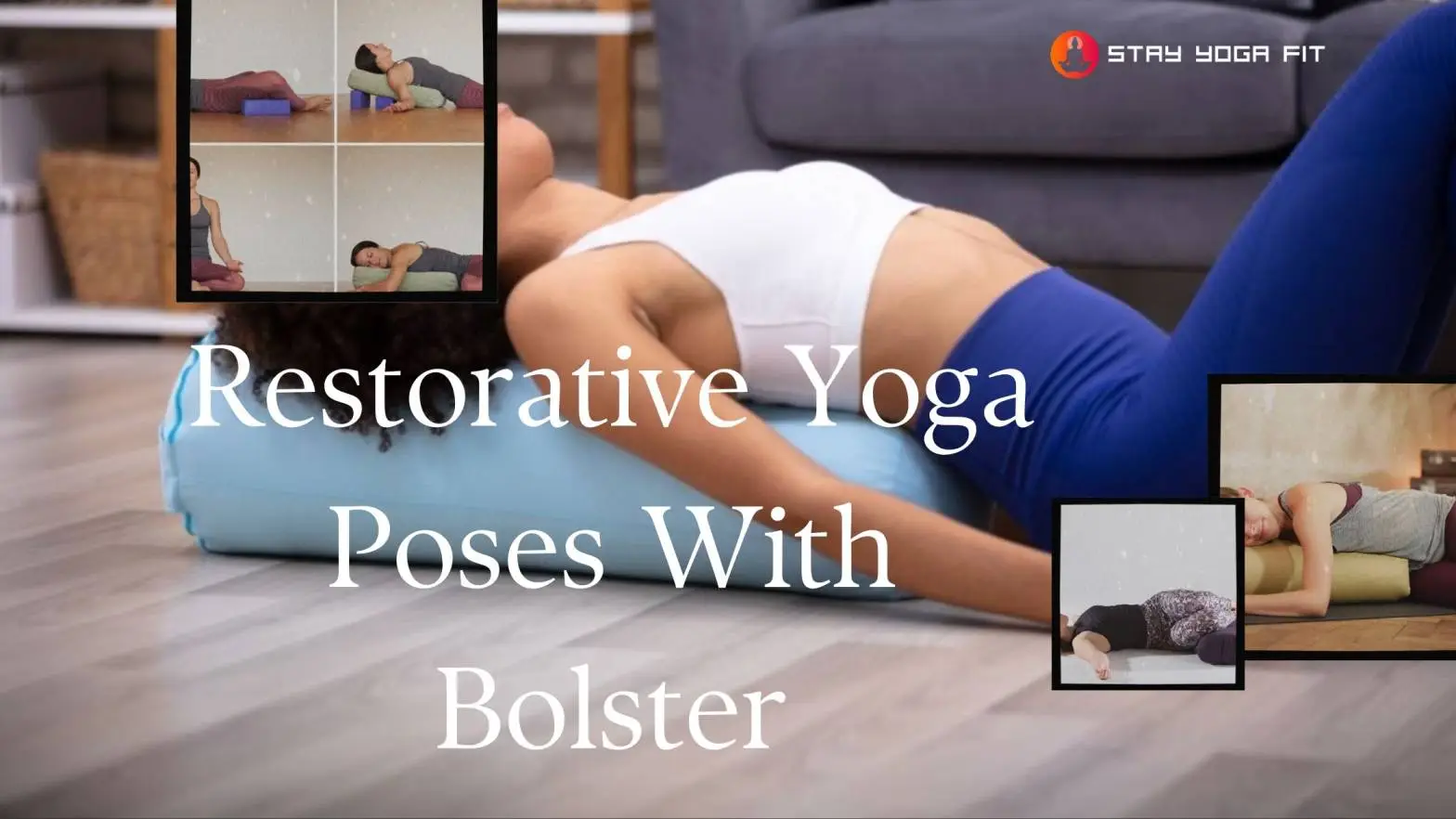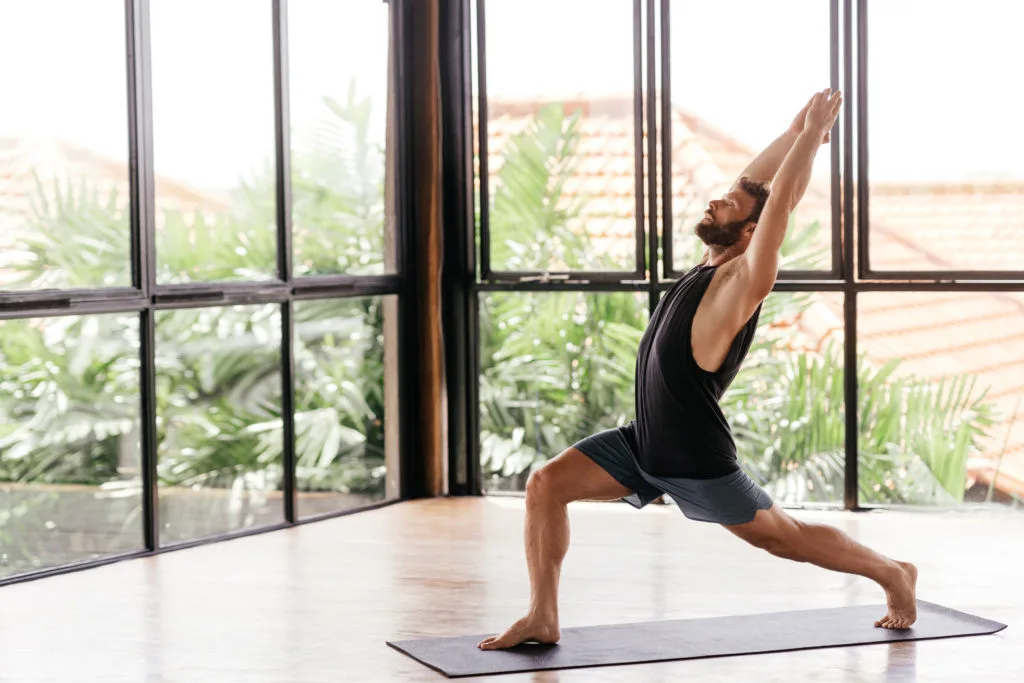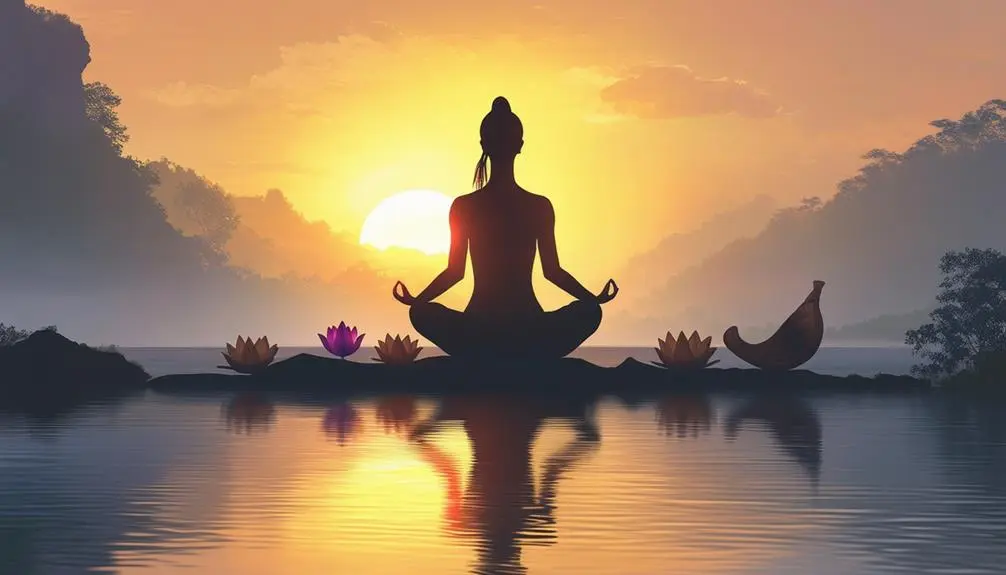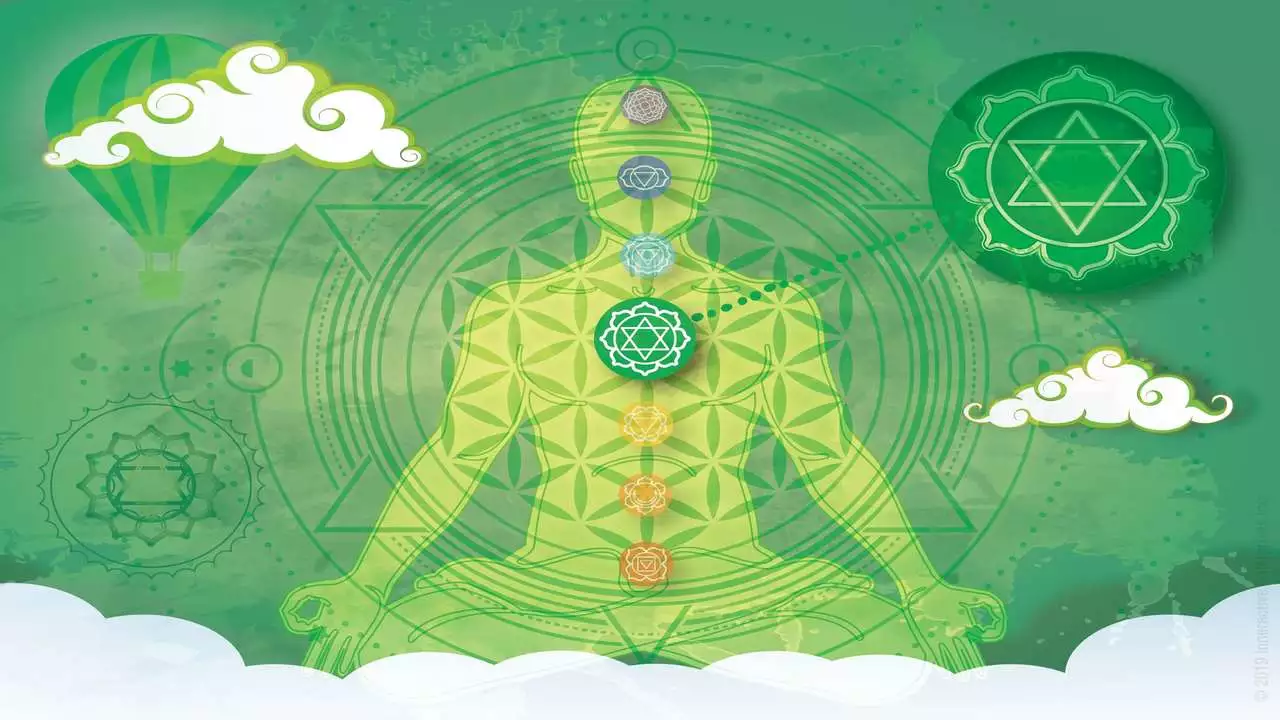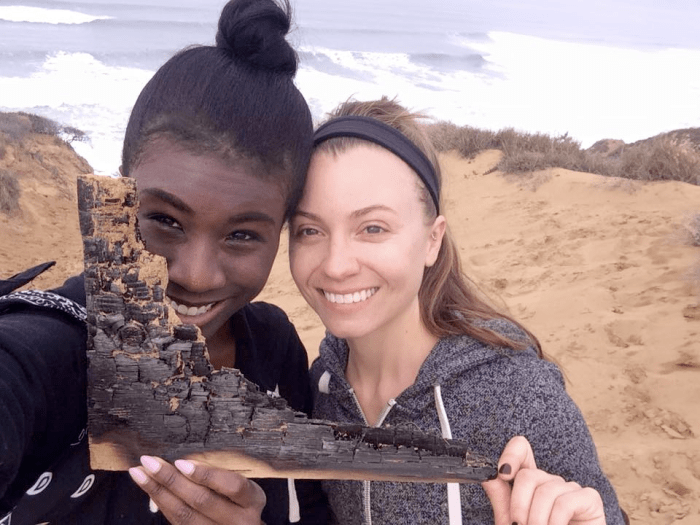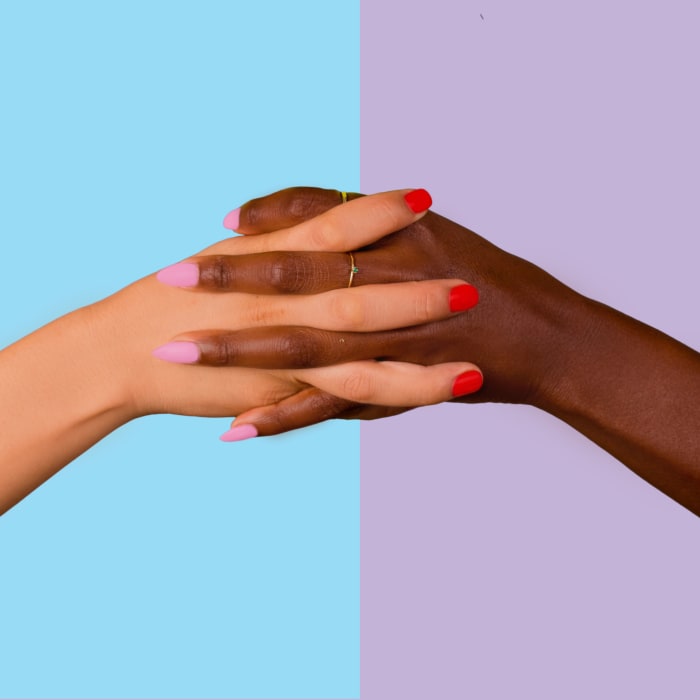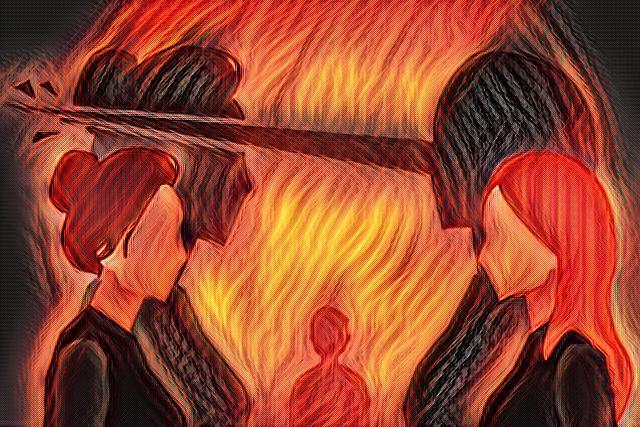“Racism against black people is not just a white thing,” says Iman Gibson, 32, a dedicated meditation practitioner and founder of the wellness coaching brand Brocollete and one-half of the duo that released a trio of guided meditations for antiracism today. Tori Lund, 33, a yoga teacher, classically trained vocalist, and singer-songwriter in the country rock band Few Miles South is Gibson’s lifelong friend since the seventh grade and spiritual collaborator.
They discovered a shared passion for yoga and meditation during their first yoga class together at their alternative, mostly Jewish middle school in Santa Monica, California, where the teacher played Sade’s “Lovers Rock” album on repeat. They attended life-skills classes where they “sat in a circle, burned sage, and talked about their feelings,” Gibson says, adding that despite their “hippie-ish” upbringing, she was still the only Black kid in school. She considers Lund, who describes her family as the epitome of white American culture and Christianity, as her first white friend. But even then, both Gibson and Lund would describe their childhood as a progressive liberal bubble. It wasn’t until after high school and college when Lund moved to Blakely, Georgia, about three hours south of Atlanta, and Gibson to the Bay Area, that the veil was lifted and they began to see racism in America through what they describe as a 360° perspective.
That perspective, however, is not limited to Black and white. Gibson says she’s been discriminated against by other people of color, or, as she puts it, people who don’t look like her. “The problem I see with a lot of the narrative around anti-Black racism and allyship is that it’s specifically being targeted at white people,” Gibson says.
See also How Restorative Yoga Can Help Heal Racial Wounding
The Catalyst for Collaboration
Following the murder of George Floyd and in wake of the protests and global outrage that ensued, Gibson and Lund became inspired to create a unique trifecta of guided meditations that would help any person, white or otherwise, dismantle their privilege, own their allyship, and cultivate compassion. The entire project, a healing salve and labor of love for the two friends, was recorded remotely—Gibson from her broom closet in her Oakland apartment and Lund at her recording studio. The ambient, atmospheric guitar sounds that accompany the meditations are played by Lund’s partner and bandmate, Blake English, who also engineered the sound.
Their album, “Antiracism Meditation,” will be available on iTunes, Spotify, and other streaming platforms, as well as the Insight Timer app, where Gibson and Lund will soon offer an antiracism course. As a bonus, the album also includes several antiracist journaling prompts to deepen self-inquiry. Gibson and Lund say that any profits earned from the album will be donated to a still-to-be-determined nonprofit such as the ACLU or Color of Change. “Antiracism Meditation” follows Gibson’s first guided meditations album, called Re:Fresh and released in 2018.
See also Blogger Mia Caine On Conscious, Inclusive Wellness
A Special Preview of "Antiracism Meditation"
See also Teach Your Child this Meditation for Positive Energy and Keeping an Open Mind
A Q&A With The Creators of "Antiracism Mediation"
We spoke to Gibson and Lund to learn more about their creative process and how their meditation album can help listeners unpack their privilege.
This conversation has been edited and condensed for clarity and length.
YJ: How did your friendship provide you with the perspective to create something constructive to address this tough topic?
Lund: We have a deep level of trust. Race and racism have been a part of our conversations for a long time. Some of that is realizing behaviors I've had that have been problematic, or friendships and relationships with people that have exposed things that I've overlooked that are problematic and have been potentially harmful for Iman or for other people of color. I've been able to move through a lot of the discomfort that I think other people who look like me experience when they're trying to have these conversations, or when they look at themselves deeply and realize how they might be contributing to racism in our society. I could relate to that again when we were making these meditations and I wanted to make sure that piece was in there. I think it prevents a lot of action from people when you don't deal with feelings of defensiveness, guilt, or shame. If I had not had this friendship, I don't think I would have been able to look at privilege honestly.
Gibson: My mother grew up in the segregated South in Texarkana, Texas, where she had to drink out of different water fountains from other children. Before she moved to California, I think my family had this view of what America was and that there were so much racism and discrimination toward people who looked like me. They wanted to protect me so that I wasn’t mistreated. I grew up in West LA, so I didn't really believe that America was as racist as it is until I got older. But institutionalized racism exists in California as well, it’s just harder to see. Even if you look at some yoga studios; I would rarely see people who looked like me at studios in Santa Monica, even the donation-based ones. When I moved to the Bay Area and really started to open my eyes to racism, I’d notice it in schools, in places I’ve worked, and in the wellness industry where you have the appropriation of Indigenous healing cultures. Even in my spiritual and Buddhist studies, people of color are often overlooked. That's been emotionally very hard for me, but having a friend like Tori who cares about me, my life, my culture, and my people, I think what we've been able to explore in our relationship and our sisterhood—being able to use the wisdom from our spiritual practices—is so much more powerful together than anything we could do on our own. And not just because we're a Black woman and a white woman, but because we’ve both lived in the same place and then gone our separate ways to experience very different parts of the country.
What was the process of cowriting remotely from opposite coasts like?
Lund: We collaborated on every meditation. I could speak to the first one because I have privilege and internalized racism—and I didn’t realize it as deeply until I did this project and was in a constant state of asking questions and hearing perspectives. We tried to provide as many viewpoints as possible, so it was a lot of editing a lot of back and forth.
Gibson: Both of us have been equally dedicated and committed to this process. Tori did the bulk of the research on racism, privilege, and allyship, and we’ve got a 40-page document of notes that we compiled before we whittled it down to what's most important; the specific themes. What's most interesting, we’ve found, is that a lot of racist behavior is shielded under a coating of kindness. It’s something that people may not realize; they don't have the intention to be racist or to “other” someone. For example, I've gone to a meditation center and someone said, “Oh, we're so happy that you're here! We want more of you here!” That singles me out and makes me uncomfortable. So we tried to get at some of the more subtle elements that people often don't realize.
See also 4 Ways to Communicate Effectively This Week
The first meditation on privilege may be uncomfortable for some to hear. Why did you decide to lead with the most difficult meditation on the album?
Gibson: There's this messaging of “do the inner work,” but what exactly is the inner work? Mindfulness meditation can help you build the compassion and the fortitude to not only keep showing up, but to feel supported as you do the inner work. This meditation helps you work through some of the shame and guilt you might feel so that you can show up with more impact. It was important for us to be direct and offer specific examples, so instead of using a broad generalization, I wrote the things that I've directly heard or experienced. We were also thoughtful about who said which part of the script—as a Black woman, I didn’t want people to hear my voice and feel guilty. We also wanted to be supportive and compassionate. I have a lot of compassion for Tori as she's going through this difficult process—I don't want her to feel bad or beat herself up. We were intentional about who said what, so that whomever is listening would feel cared for, loved, supported, and held.
Lund: I don't know if there's an easy way to handhold yourself once you decide to do this work. You have to take responsibility, which is uncomfortable, and then you have to stick with it. You have to dive right in and feel it. It gets easier the more that you do it—but you’re not going to somehow ease your way into the discomfort. I hope that doesn't scare people away—but the privilege meditation is delivered with compassion and offers multiple perspectives to address how people might be feeling or confronted. People need to take responsibility for their part in the suffering and their part in creating healing.
See also The Time to Rest is Now
Do you think the allyship and sacral chakra meditation offers subtle guidance for effective, non-performative allyship ?
Gibson: We wanted to give people practices that train them to stand up for others as they would for themselves, and retrain their gut response from inaction to the right action. So when you apply mindfulness to this topic, and see something that’s unjust, you can recognize it because your eyes are awake—before you were asleep, and you didn’t notice, but you see it now—and you recognize it as an opportunity to do something about it. We want to help make taking action more automatic and less performative.
Lund: There's not really anything we can do to make sure that somebody's intention is truly in the right place—but people standing up is better than people not standing up at all. Hopefully their intentions are there and they can start to look at themselves and question, Am I doing this to appease my ego and to feel good? Or am I doing this because I really see a deep need to acknowledge my contribution—because I want to prevent it from creating more problems? I hope the meditations get people to look at themselves more deeply and ask those kinds of questions, but I don't know that we can ensure it's going to prevent more performative action.
The loving-kindness meditation might not have been as powerful on its own without the other two, since we can’t just sit and meditate the world’s problems away and pray for equality. Would you agree?
Gibson: It’s about building compassion toward yourself for the times you may not have said the right thing and feel guilty. There's no room for guilt, which only hinders one from improving oneself, taking appropriate action, and showing up in real life. That's why we were intentional about including a meditation that was supportive in building compassion for oneself, for others who were not doing the right thing, and for those who are suffering. I’ve observed a big problem among certain mindfulness and yoga communities with this sort of, Oh, this really awful thing is happening. Let's sit on our mats and say a metta and wish them well. But then when you get up off your mat, are you being equitable to Black people and to people of color? That’s why we offered specific, real-life examples to bring in the compassion work and provide something that made it tangible and show the different opportunities to create change.
Lund: It's so easy to want to just go there—we just want to love everyone and say that love is the answer. But people have to stand up. And sometimes you can do that in a way that has a lot of love and sweetness behind it. But other times, you have to be more stern and maybe hurt someone's feelings and maybe risk a relationship over it. But it's necessary and worth it. This is for the sake of humanity.
See also Even Interrupted Meditation Benefits the Mind, Body, and Soul—Here, How to Embrace Distraction
3 Anti-Racism Journaling Prompts for Self-Reflection
Deepen your inner work with these journaling prompts from Gibson and Lund, written exclusively for Yoga Journal readers.
1. Racism: Do I truly treat all beings equally? Do I prefer some over others?
Do all of my friends look like me? Do I learn from Black and other diverse teachers? Do I incorporate diverse perspectives into my work?
2. Privilege: How does it feel to know that I have privilege? What can I do differently, now that I know?
Do I recognize my privilege if I am a POC whose culture experiences less or non-life threatening racism? How can I use my privilege to speak up for others?
3. Allyship: Will I speak up even when it's uncomfortable?
I will ensure Black people and other people of color are heard and represented in the spaces I patron and at work. I will speak up when I notice or am notified of systemic racism, especially when I’m uncomfortable.
See also 31 Yoga and Self-Care Resources for Black Yogis (Especially if Social Media Has You Overwhelmed)

